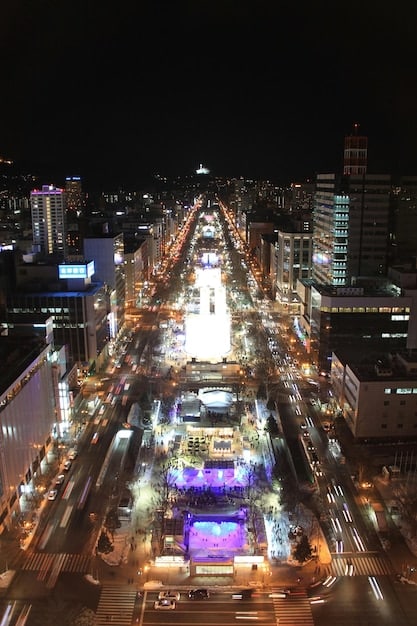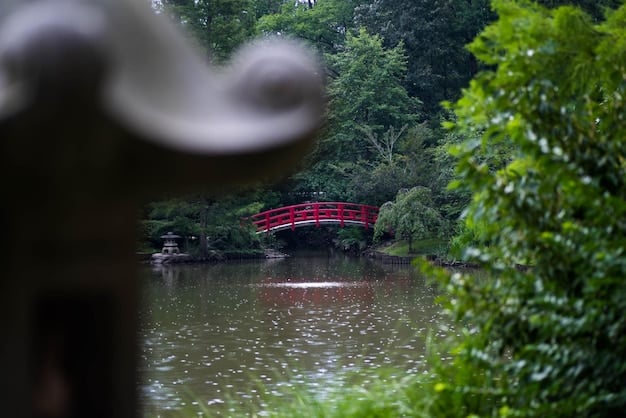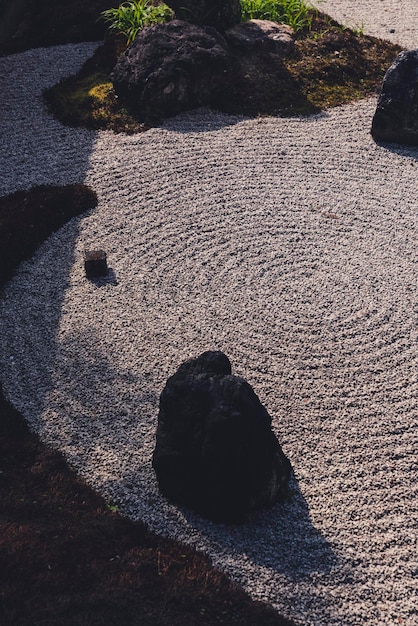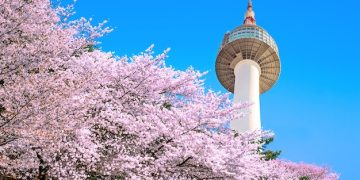Japanese Drama Filming Locations You Can Actually Visit: A 2025 Travel Guide

A captivating journey awaits those eager to explore the real-world settings of their favorite Japanese dramas, offering a unique blend of cultural immersion and cinematic nostalgia by visiting Japanese Drama Filming Locations You Can Actually Visit: A 2025 Travel Guide.
For enthusiasts of Japanese dramas, the allure extends beyond compelling plots and memorable characters; it often includes the stunning backdrops that bring these stories to life. Our 2025 travel guide delves into the most iconic Japanese Drama Filming Locations You Can Actually Visit: A 2025 Travel Guide, providing a unique roadmap for fans wishing to walk in the footsteps of their beloved protagonists. This exclusive insight offers a dual experience: the thrill of recognizing famous scenes blended with the rich cultural tapestry of Japan itself.
The Allure of Drama Tourism in Japan
The phenomenon of “drama tourism”—traveling to locations featured in films and television—has gained considerable traction, especially in Japan. For fans of Japanese dramas, this transcends mere sightseeing; it’s an immersive dive into the narratives that have captivated them. These locations often become pilgrimage sites, providing a tangible link to the emotional resonance of the stories.
What makes drama tourism particularly compelling is the blend of fantasy and reality. Visitors can stand exactly where a poignant confession happened or retrace the steps of a beloved character, enriching their understanding and connection to the drama. This trend is bolstered by social media, where fans share their experiences, further popularizing these hidden gems and well-known landmarks alike.
Beyond the Screen: Experiencing Filming Sites
Experiencing these sites firsthand offers a deeper appreciation for the production teams’ choices and the stories they tell. It allows visitors to contextualize the narrative within Japan’s diverse landscapes, from futuristic cityscapes to serene historical districts. The feeling of stepping into a scene is unparalleled, creating lasting memories for any drama aficionado.
- Authentic Connection: Feel closer to characters and stories by being in their “world.”
- Unique Itinerary: Discover lesser-known areas of Japan often overlooked by conventional tourism.
- Cultural Immersion: Engage with local communities and traditions connected to the filming locations.
- Photographic Opportunities: Capture stunning, recognizable scenes with a personal touch.
The journey to these locations is also an adventure in itself, often involving scenic train rides or charming local buses. This adds another layer to the travel experience, allowing for spontaneous discoveries and encounters with fellow fans or curious locals. The anticipation of arriving at a famous spot builds throughout the journey, making the eventual revelation even more satisfying.
Furthermore, many of these locations offer unique local delicacies or souvenirs, providing a tangible keepsake from the visit. This extends the experience beyond just visual recognition, engaging other senses and creating a more holistic memory. The appeal lies not just in seeing, but in fully experiencing the setting that shaped a beloved drama.
Tokyo’s Cinematic Canvas: Iconic Drama Spots
Tokyo, a city of dazzling contrasts, serves as a prominent setting for countless Japanese dramas, offering a rich tapestry of backdrops from neon-lit districts to tranquil gardens. Its vibrant energy and diverse architecture make it a dynamic canvas for storytelling. Many iconic scenes take place in easily accessible, real-world locations, inviting fans to explore the capital through a dramatic lens.
Shibuya Crossing, a perpetually bustling pedestrian scramble, is perhaps the most globally recognized Japanese landmark. It has featured prominently in numerous dramas, often symbolizing the anonymity or overwhelming nature of urban life. Standing amidst the flowing crowds, one can almost hear the soundtrack of a suspenseful drama playing in the background.
Exploring Well-Known Districts
Beyond Shibuya, districts like Shinjuku, Ginza, and Akihabara each lend their unique character to Japanese dramas. Shinjuku’s towering skyscrapers and vibrant nightlife often provide a backdrop for office romances or crime thrillers, while Ginza’s upscale shopping streets are perfect for narratives of high society. Akihabara, with its electric town atmosphere, frequently appears in dramas exploring subcultures or technological advancements.
- Shinjuku Gyoen National Garden: A serene escape often used for contemplative scenes or romantic strolls.
- Tokyo Tower & Skytree: Iconic landmarks that offer stunning cityscapes, frequently appearing in establishing shots or romantic climaxes.
- Asakusa (Senso-ji Temple): Provides a traditional Tokyo feel, perfect for historical dramas or scenes depicting cultural heritage.
- Harajuku (Takeshita Street): A vibrant, youth-culture hub, ideal for dramas focusing on fashion, trends, or coming-of-age stories.
The meticulous attention to detail in Japanese dramas means that even a seemingly ordinary café or a specific street corner can become a key location. Fans often spend time painstakingly identifying these spots through meticulous re-watching and online forums, turning their visit into a rewarding treasure hunt. The reward is not just seeing the place, but understanding its role within the drama’s narrative.
Moreover, Tokyo’s extensive and efficient public transportation system makes navigating these diverse drama locations remarkably easy. A single Metro pass or JR Pass can unlock a world of cinematic exploration, allowing fans to hop from one iconic spot to another without hassle. This accessibility further enhances Tokyo’s appeal as a drama tourism destination.

Kyoto and Beyond: Historical and Scenic Settings
While Tokyo offers modern urban drama, other regions of Japan, particularly Kyoto, provide a rich tapestry of historical and scenic backdrops for different genres of Japanese dramas. Kyoto, with its ancient temples, traditional wooden houses, and serene gardens, is a preferred choice for historical dramas, period pieces, and stories emphasizing traditional Japanese culture. The city’s timeless beauty lends an unparalleled authenticity to these narratives, transporting viewers to a bygone era.
The Fushimi Inari-taisha shrine, famous for its thousands of vermilion torii gates, is a visually stunning and spiritually significant location frequently featured in dramas. Its mystical atmosphere and winding paths offer a unique setting for introspective journeys or dramatic chases. Similarly, the bamboo groves of Arashiyama provide an ethereal backdrop, often used for scenes requiring a sense of tranquility or mystery.
Exploring Regional Diversity
Beyond Kyoto, other regions of Japan boast unique landscapes that have become integral to various drama narratives. Hokkaido, with its vast natural beauty, often serves as a setting for dramas about rural life, self-discovery, or stories connected to nature. Its snowy landscapes in winter provide a stark yet beautiful contrast to the bustling cities.
- Nara Park (Nara): Famous for its friendly deer and ancient temples, appearing in dramas for whimsical or historical scenes.
- Osaka (Dotonbori): The vibrant entertainment district, often featured in comedies or dramas showcasing lively urban nightlife distinct from Tokyo.
- Shirakawa-go (Gifu): A UNESCO World Heritage site known for its gassho-zukuri farmhouses, providing a picturesque, traditional village setting.
- Setouchi Islands (Seto Inland Sea): The scenic islands offer a serene, coastal backdrop for dramas focusing on community, art, or slow living.
These regional locations often highlight Japan’s incredible geographical diversity. From the volcanic landscapes of Kyushu to the stunning coastlines of the Tohoku region, each area contributes its distinct character to a drama’s visual language. Traveling to these sites offers an opportunity to explore portions of Japan that might not be on a typical tourist itinerary, revealing a deeper, more authentic view of the country.
The local hospitality and unique regional cuisines found in these filming locations also add to the immersive experience. Visiting a drama set in a small town might lead to discovering charming local eateries or traditional crafts, enhancing the overall journey. This allows fans to not just see the locations, but to truly live the atmosphere depicted in their favorite shows, connecting with the local culture that brings these stories to life.
Planning Your 2025 Drama Tour: Tips and Tricks
Embarking on a Japanese drama filming location tour requires careful planning to maximize your experience and ensure a smooth journey in 2025. With a plethora of dramas and locations to choose from, prioritizing becomes key. Start by identifying the dramas and specific scenes that resonate most with you, as this will help narrow down your itinerary. Researching the exact addresses and accessibility of these locations is crucial, as some may be in remote areas or private properties.
Leverage online resources extensively. Fan communities, drama wikis, and dedicated travel blogs often compile comprehensive lists of filming locations, complete with detailed directions and transport tips. These resources are invaluable for planning, as they often include insider information or updated access details. Cross-referencing multiple sources can help verify information and ensure accuracy.
Essential Planning Considerations
Transportation in Japan is highly efficient, but understanding the best passes and routes can save time and money. The JR Pass is a popular option for long-distance travel, while regional passes might be more economical for specific areas. Booking accommodations well in advance, especially during peak seasons, is also advisable. Consider staying near major transportation hubs to easily access various locations.
- Offline Maps & Translations: Download maps and translation apps for offline use, especially in areas with limited connectivity.
- Comfortable Footwear: Expect a lot of walking, both within cities and at more rural sites.
- Portable Charger: Keep your devices charged for navigation, photos, and quick research.
- Respect Local Customs: Be mindful of noise levels, photography rules, and privacy, especially in residential areas or religious sites.
Timing your visit can significantly impact the experience. Visiting during off-peak seasons might mean fewer crowds, but specific locations might be seasonal (e.g., cherry blossoms in spring, autumn leaves). Researching the best time of year for your chosen locations can enhance their beauty and your enjoyment. Be prepared for varying weather conditions depending on the season and region.
Flexibility is also a virtue. While detailed planning is beneficial, allow for spontaneous discoveries. You might stumble upon an unexpected location or a local festival that enhances your trip. Enjoy the journey as much as the destination, and embrace the unique charm that each drama location embodies. This approach not only makes the trip more enjoyable but also more memorable.
Beyond the Mainstream: Discovering Lesser-Known Filming Gems
While iconic landmarks are undeniably exciting to visit, some of the most charming and memorable filming locations often lie off the beaten path. These lesser-known gems, perhaps a quiet café, a local park, or a scenic bridge in a residential area, offer a unique glimpse into the everyday Japan that forms the backdrop of many nuanced Japanese dramas. Discovering these spots can feel like uncovering a personal secret, adding an intimate layer to your drama tour.
Many slice-of-life or character-driven dramas utilize such locales to ground their narratives in realism. For instance, a small, unassuming bookstore might be the setting for a crucial monologue, or a quaint neighborhood street could be where a budding romance first blossoms. These locations, being less touristy, often retain a more authentic local atmosphere, allowing for a more immersive cultural experience alongside your drama quest.
Unearthing Hidden Treasures
Researching these hidden spots often requires digging deeper than generic travel guides. Online Japanese drama fan forums, dedicated location scout blogs, and even detailed analyses of drama episodes are excellent resources for identifying these subtle yet significant backdrops. Sometimes, simply paying close attention to the background details in a scene can reveal clues to these more elusive locations.
- Local Restaurants and Cafés: Many dramas feature everyday eateries; look for establishments with distinct character.
- Neighborhood Parks: Often used for casual meetings, emotional moments, or children playing.
- Residential Streets: Pay attention to unique architectural details or small shops that give a street personality.
- Public Libraries or Community Centers: Frequently appear in dramas about everyday life or learning.
Visiting these non-touristy locations also provides an opportunity to interact more with local communities. You might find yourself in a neighborhood coffee shop frequented by locals, or observing daily life in a way that’s impossible in bustling tourist hubs. This can lead to genuine cultural exchanges and a deeper appreciation for the context of the dramas you love.
It’s important to approach these locations with respect for the local residents and their privacy. While the excitement of recognizing a filming spot is high, remember that these are often residential or working areas. Maintain decorum, avoid excessive noise, and always ask permission if you wish to photograph specific establishments or residential properties. This ensures a positive experience for both visitors and locals, preserving the charm of these hidden gems.
Seasonal Beauty: When to Visit Drama Locations
The timing of your visit to Japanese drama filming locations can dramatically enhance the experience, as Japan’s distinct seasons each offer a unique aesthetic that influences the atmosphere of many dramas. Deciding when to travel depends on the specific feel you wish to capture, often mirroring the seasonal moods portrayed in your favorite shows. For example, a drama set amidst a vibrant spring festival will feel more authentic if visited during cherry blossom season, while a poignant winter drama benefits from snowy landscapes.
Spring (March to May) is arguably the most popular season, primarily due to the breathtaking cherry blossoms (sakura). Many dramas feature scenes under soft pink petals, symbolizing new beginnings or fleeting beauty. Visiting iconic parks or riverside paths that appeared in such scenes during this season offers an unparalleled visual experience.
Seasonal Considerations for Your Trip
Summer (June to August) brings lush greenery and frequent festivals (matsuri). Dramas often use summer settings for vibrant, energetic scenes, especially those involving school life, fireworks, or trips to the beach. While humid, the long days and festive atmosphere can make for a lively trip. Autumn (September to November) is revered for its stunning autumn leaves (koyo), transforming landscapes into fiery reds, oranges, and golds. This season is perfect for dramas with contemplative or romantic themes, as the scenery is inherently dramatic and beautiful. Visiting temple grounds or scenic mountain roads seen in such shows during autumn can be truly magical.
- Spring (March-May): Cherry blossoms, new beginnings; ideal for romantic or school-life dramas.
- Summer (June-August): Lush greenery, festivals, beaches; suits energetic or slice-of-life dramas.
- Autumn (September-November): Vibrant foliage, crisp air; perfect for introspective or historical dramas.
- Winter (December-February): Snowy landscapes, festive illuminations; gives a cozy or dramatic backdrop typical for emotional or suspenseful narratives.
Winter (December to February) offers a serene, often stark, beauty, especially in northern regions where heavy snowfalls are common. Dramas featuring cozy indoor scenes, winter sports, or poignant, reflective moments often leverage this season. City illuminations during winter also create a magical, often romantic, atmosphere. Visiting specific locations during their corresponding drama season amplifies the emotional connection and visual recognition, making the experience deeply personal and evocative.
However, seasonal popularity also means varying crowd levels and prices. Spring and autumn are peak tourist seasons, so expect larger crowds and higher accommodation costs. Summer can be hot and humid, while winter in some areas might require special gear for snow. Plan accordingly, considering both the aesthetic appeal and practicalities of each season. Regardless of when you visit, Japan’s diverse beauty ensures a unique drama tour experience.
Navigating Public Transport and Etiquette at Filming Sites
Successfully navigating Japan’s renowned public transport system is fundamental to any drama filming location tour. Its efficiency, punctuality, and extensive network make it the ideal mode of travel, whether you’re traversing major cities or heading to more rural areas. Understanding the basics of train and bus travel, including purchasing tickets, using IC cards like Suica or Pasmo, and interpreting schedules, will significantly smooth your journey between famous drama backdrops.
Japan’s public transport is a character in itself in many dramas, often featuring scenes of daily commutes, chance encounters, or poignant farewells at train stations. Experiencing this system firsthand allows you to observe everyday Japanese life and appreciate the subtle ways it’s integrated into storytelling. Keep in mind that rush hours can be incredibly crowded, especially in cities like Tokyo, so planning travel during off-peak times can enhance comfort.
Essential Transport Tips and Respectful Practices
Beyond transportation, observing local etiquette at filming sites is paramount. Many locations are active public spaces—temples, shrines, parks, or residential streets—and maintaining respect for others and the environment is crucial. This includes being mindful of noise levels, not littering, and refraining from touching or damaging property. Always prioritize the privacy and daily lives of locals over getting the perfect shot.
- IC Card (Suica/Pasmo): Essential for convenient cashless travel on most trains and buses.
- HyperDia/Japan Transit Planner: Invaluable apps for checking train schedules and routes.
- Queuing Culture: Always queue orderly for trains, buses, and attractions.
- Photography Etiquette: Be aware of “no photography” signs, especially in temples or private areas. Avoid disturbing others for your photos.
- Noise Levels: Keep conversations low, especially on public transport and in quiet areas. Avoid phone calls on trains.
Some filming locations might be private businesses, like cafes or shops, that allow visitors. In such cases, it’s courteous to make a purchase or ask for permission before taking excessive photos. Supporting these local businesses can also be a way of thanking them for allowing their space to be featured in the drama and supporting the local economy.
Remember that while you’re on a drama tour, you are also a guest in Japan. Embrace the opportunity to learn about and participate in Japanese culture by respecting local customs and traditions. A well-prepared and respectful traveler not only ensures a more enjoyable personal experience but also helps maintain good relations, ensuring these wonderful filming locations remain welcoming for future fans.

The Future of Drama Tourism in Japan
As the global popularity of Japanese dramas continues to surge, the landscape of drama tourism in Japan is poised for significant evolution. The year 2025 and beyond will likely see an increased focus on leveraging these cultural assets to attract more visitors, with potential collaborations between production companies, local governments, and tourism boards. This growth will not only benefit the tourism sector but also provides an authentic way for fans to connect with Japanese culture.
Innovations in technology, such as augmented reality (AR) apps, could allow visitors to overlay scenes from dramas onto their real-world views, enhancing the immersive experience. Virtual reality (VR) pre-tours might also become popular, helping fans plan their itineraries more effectively. The integration of QR codes at filming locations leading to scene clips or behind-the-scenes content could also become a common feature, deepening engagement.
Anticipated Developments and Preservation
There’s also a growing awareness of the need for sustainable tourism practices. As more people visit these sites, there will be an emphasis on managing crowds, preserving the integrity of historical and natural locations, and ensuring that local communities benefit positively from the influx of visitors. This balanced approach will be critical to the long-term success of drama tourism.
- Enhanced Digital Guides: More interactive apps and online platforms to navigate locations.
- Themed Events and Merchandise: Opportunities for exclusive events or drama-themed souvenirs at locations.
- Eco-Friendly Initiatives: Promoting responsible travel to protect natural and historical sites.
- Community Engagement: Encouraging visitors to support local businesses and respect residents.
Furthermore, we might see new travel packages specifically curated around popular dramas, offering guided tours that delve deeper into the stories and settings. These packages could include exclusive access to certain areas, expert commentary, or even meet-and-greet opportunities if tied to specific anniversaries or promotions. The potential for creative and integrated tourism experiences is vast.
Ultimately, the future of drama tourism in Japan lies in its ability to adapt and innovate while staying true to its core appeal: offering fans a meaningful and tangible connection to the stories they cherish. By blending technological advancements with a deep respect for local culture and environment, Japan can continue to be a leading destination for fans who wish to step into the dramatic worlds they adore.
| Key Point | Brief Description |
|---|---|
| 🎬 Iconic Locations | Explore famous Tokyo spots like Shibuya Crossing and Shinjuku, often seen in popular dramas. |
| 🏯 Historical & Scenic Sites | Visit Kyoto’s temples, Nara Park, or the Setouchi Islands for diverse drama backdrops. |
| 🗺️ Planning & Etiquette | Tips for public transport, respectful travel, and leveraging fan communities for detailed planning. |
| 🌸 Seasonal Visits | Optimize your trip by choosing seasons that align with your favorite drama’s aesthetic (e.g., cherry blossoms in spring). |
Frequently Asked Questions
▼
Tokyo is overwhelmingly the most popular city due to its diverse urban landscapes, from bustling Shibuya to serene parks. Kyoto follows closely for its historical and traditional settings, while Osaka and regions like Hokkaido also feature prominently in various genres, offering a wide range of backdrops for different types of Japanese dramas.
▼
Yes, Japan’s public transportation system is highly efficient and user-friendly, making it relatively easy to navigate between locations. Utilizing IC cards like Suica or Pasmo, alongside navigation apps like Google Maps or Japan Transit Planner, simplifies travel significantly. Some remote locations might require extensive planning or local transport options.
▼
Absolutely. It’s crucial to be respectful of local residents and privacy, especially in residential areas. Avoid excessive noise, littering, and entering private property without permission. Always abide by photography restrictions, particularly in temples or shrines, and remember that you are a guest in Japan, so adhere to local customs and social norms.
▼
For lesser-known dramas, online fan communities, dedicated drama wikis, and specialized travel blogs are excellent resources. These platforms often have user-contributed information and detailed analyses of scenes, helping to pinpoint exact locations. Sometimes, careful observation within the drama itself can reveal clues to unique, local spots.
▼
The best time depends on the aesthetic you’re seeking. Spring (March-May) is popular for cherry blossoms, and autumn (September-November) for vibrant foliage, both frequently featured in dramas. Summer offers lush greenery and festivals, while winter provides serene, snow-covered backdrops. Consider what season best complements the feel of the dramas you wish to explore.
Conclusion
Embarking on a journey to explore Japanese Drama Filming Locations You Can Actually Visit: A 2025 Travel Guide offers a unique and deeply personal way to experience Japan. Beyond mere tourism, it’s an immersive quest that connects fans directly to the stories and characters they cherish, transforming fictional worlds into tangible realities. From the bustling streets of Tokyo to Kyoto’s serene temples and the hidden gems scattered across the countryside, each location tells a part of Japan’s rich cultural narrative, as seen through the lens of its captivating dramas. With careful planning, respect for local customs, and an open mind for discovery, this adventure promises not just sightseeing, but a profound engagement with a beloved art form and the vibrant nation that brings it to life. May your 2025 drama tour be filled with unforgettable cinematic moments and authentic Japanese experiences.





